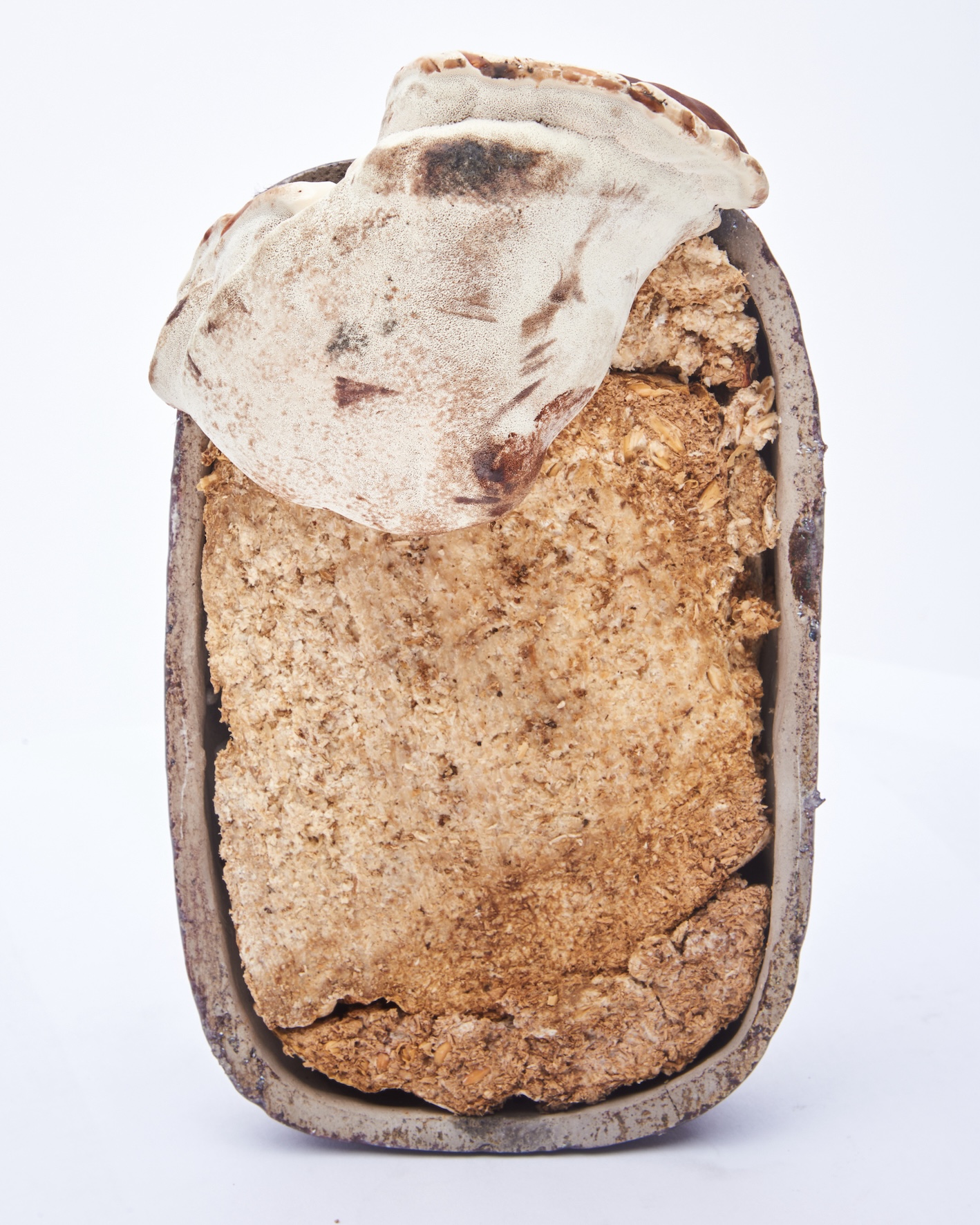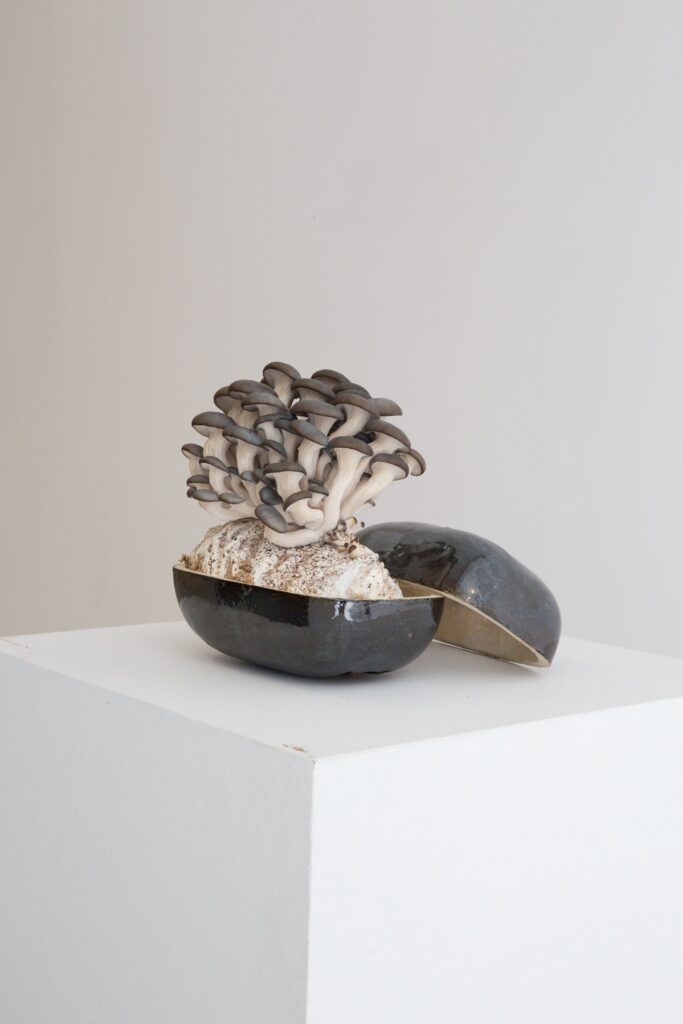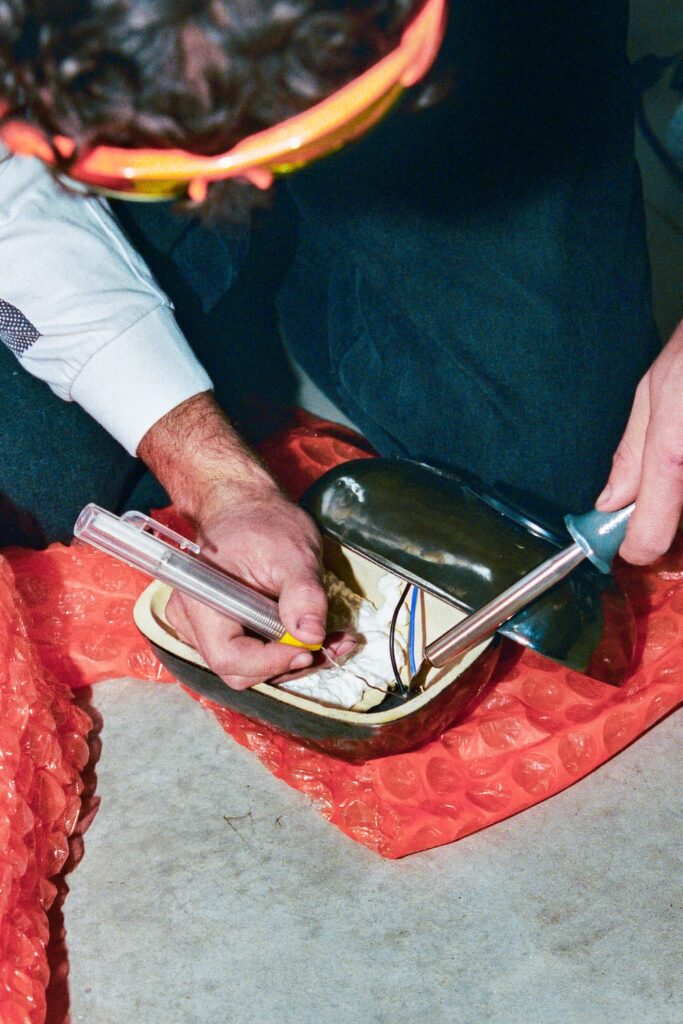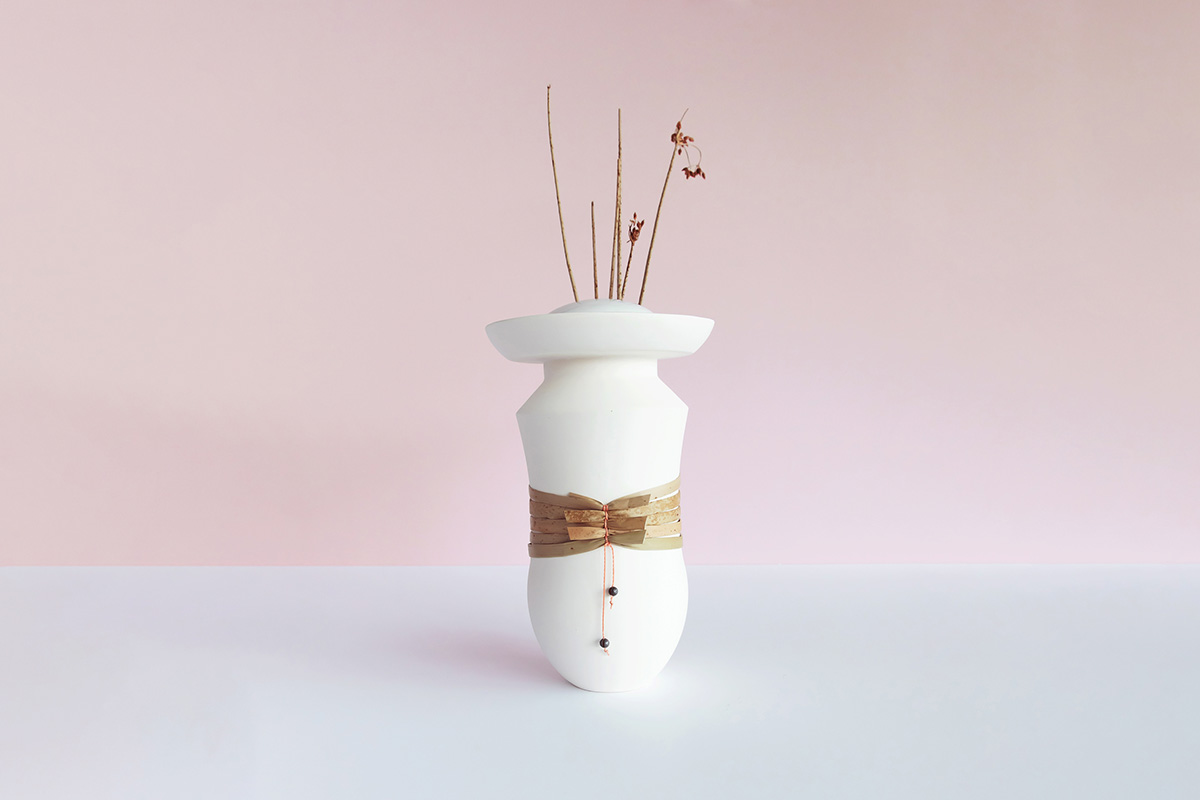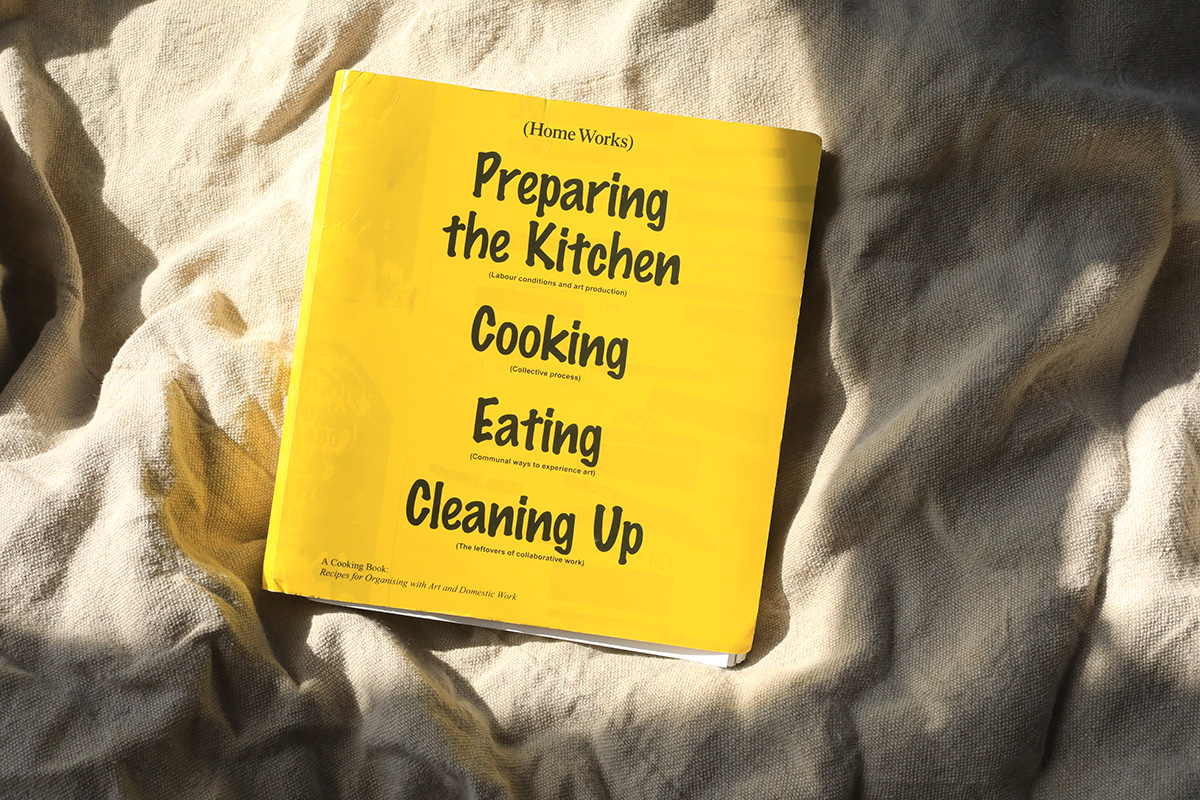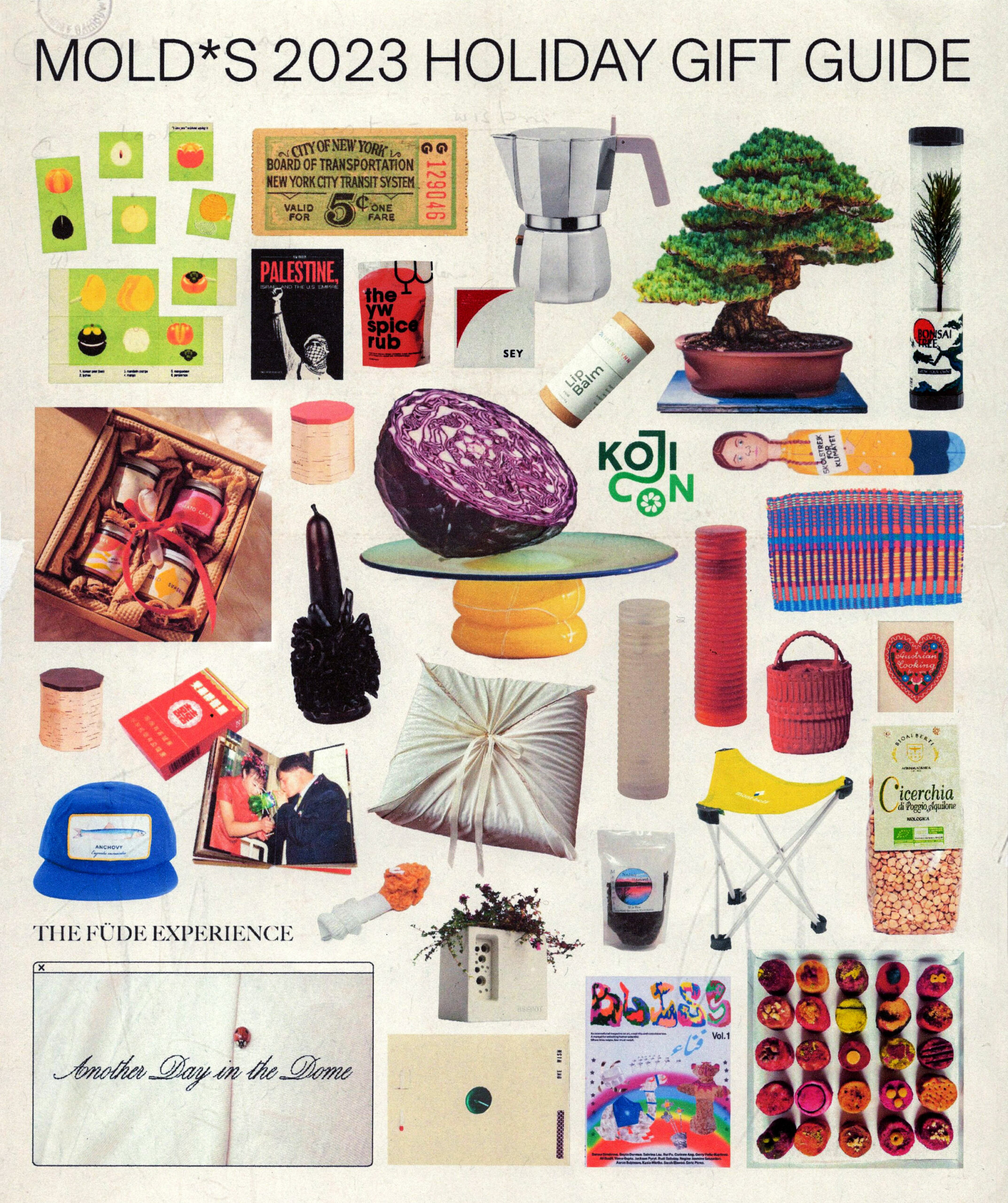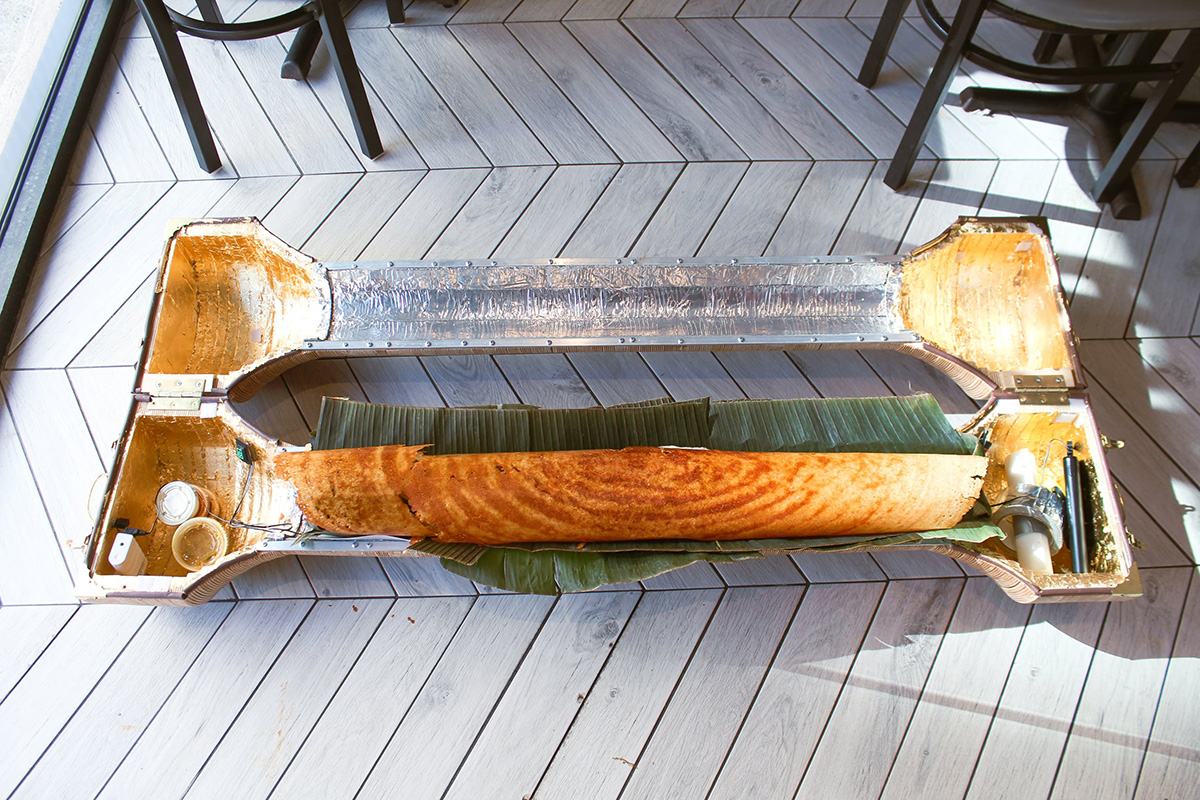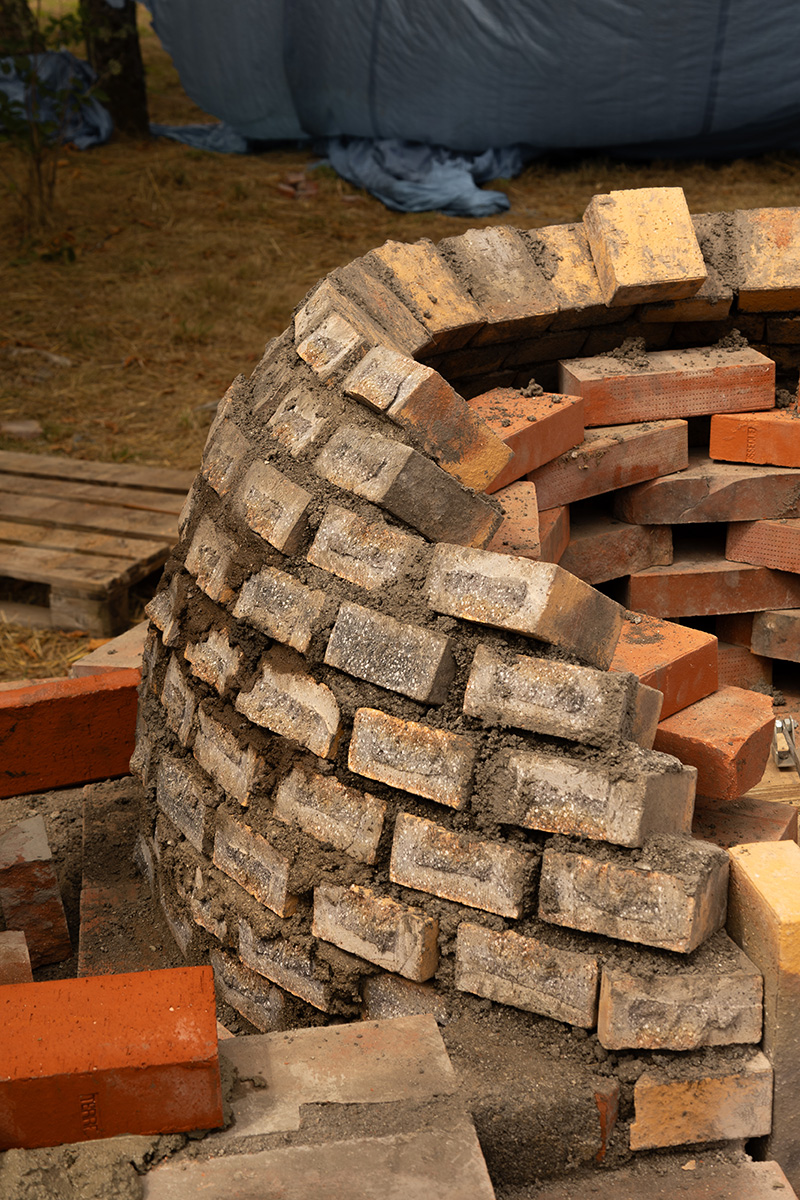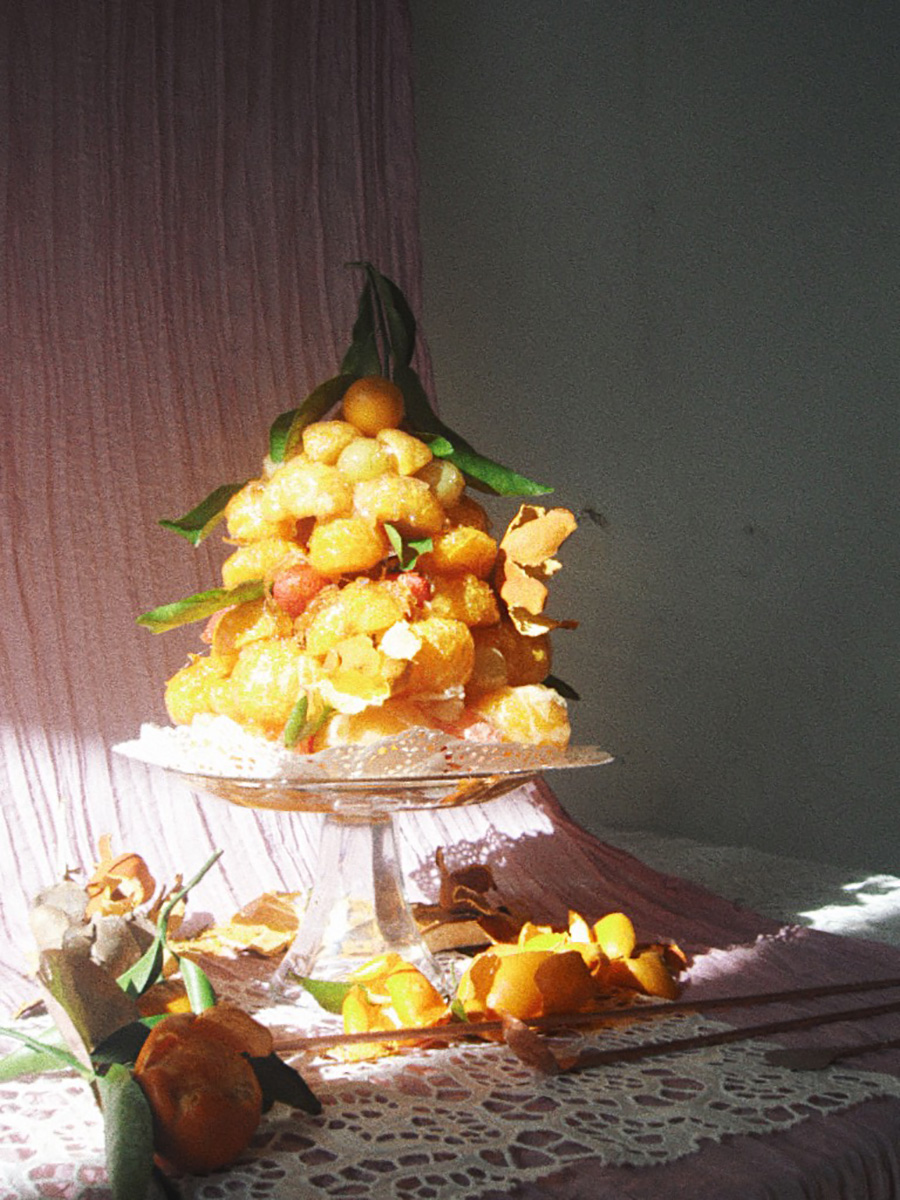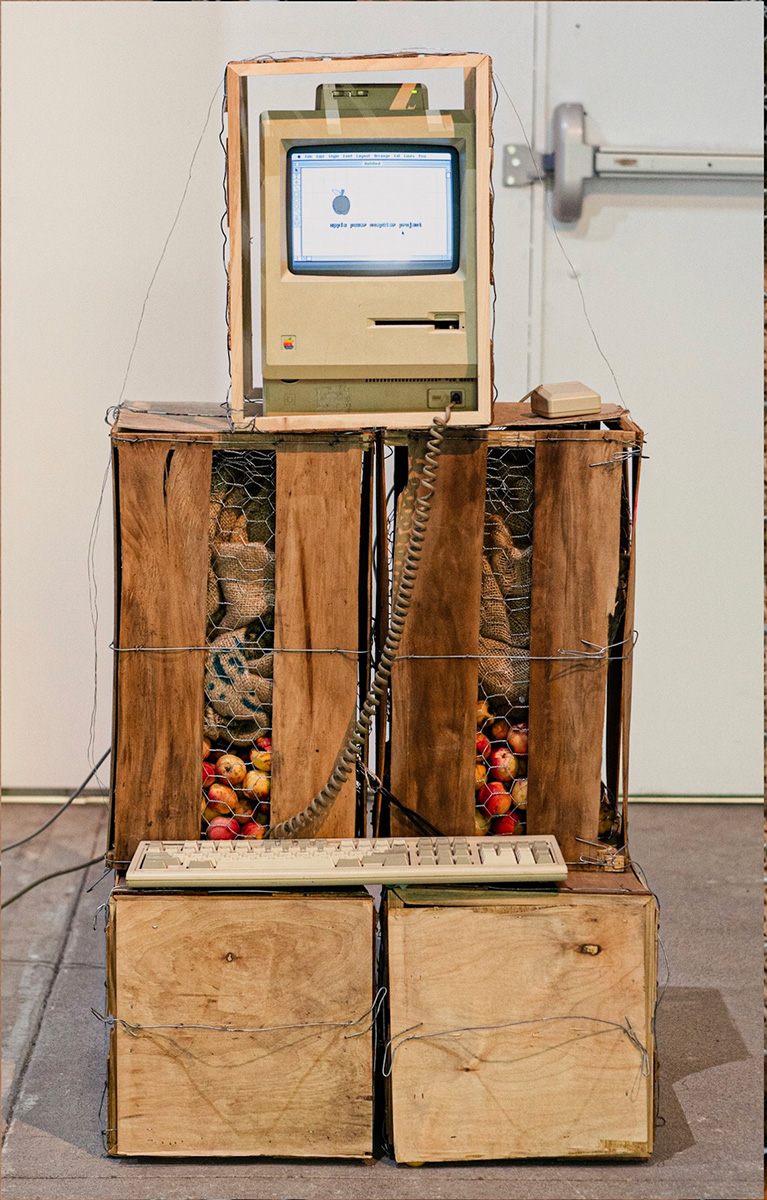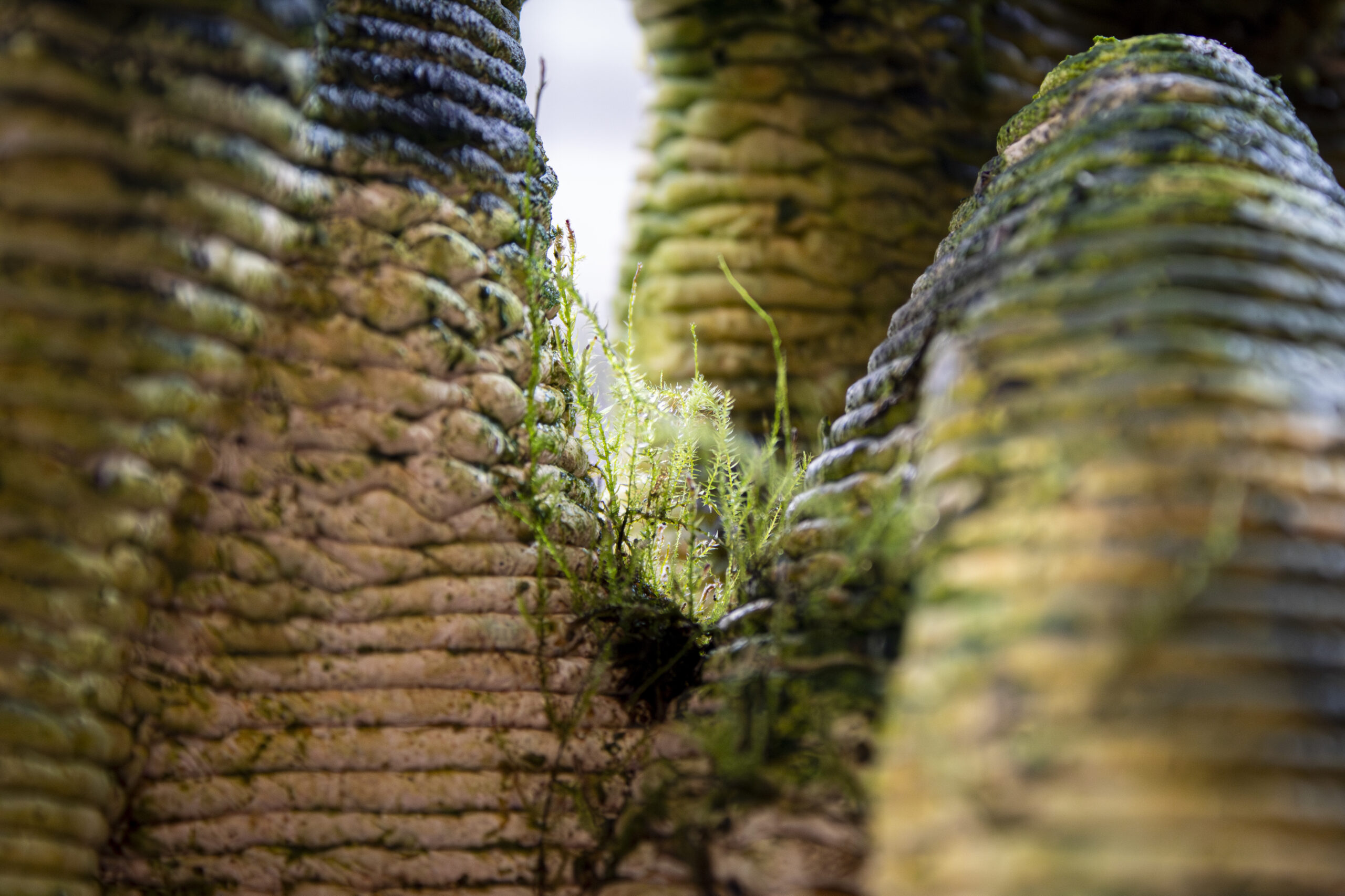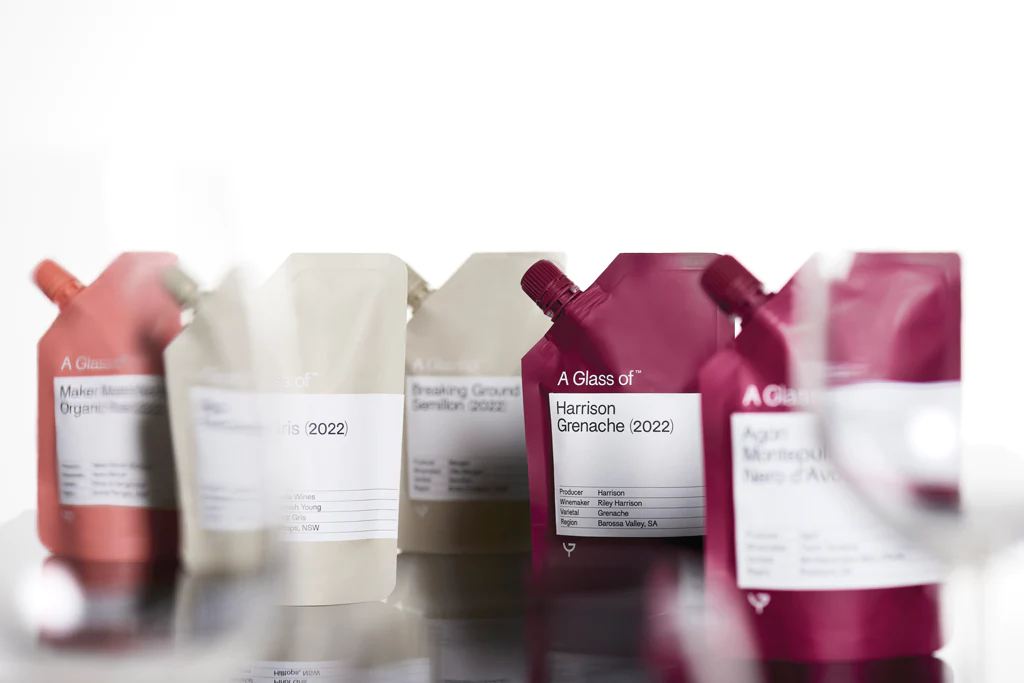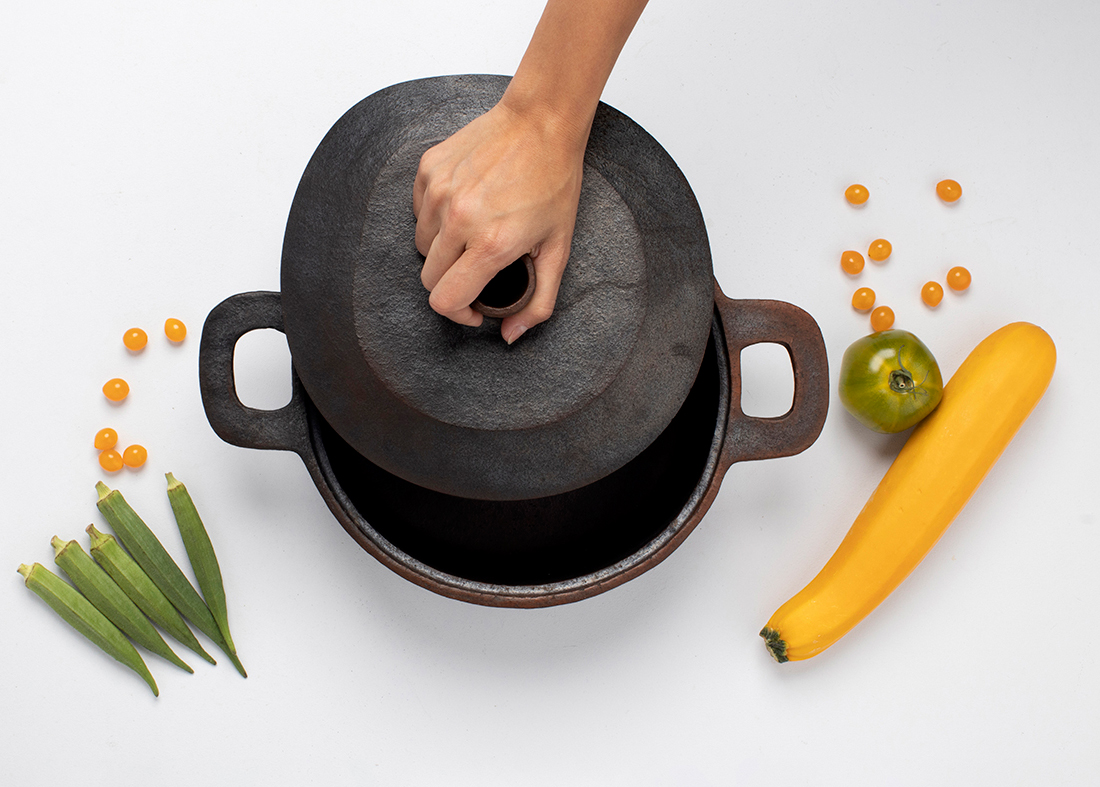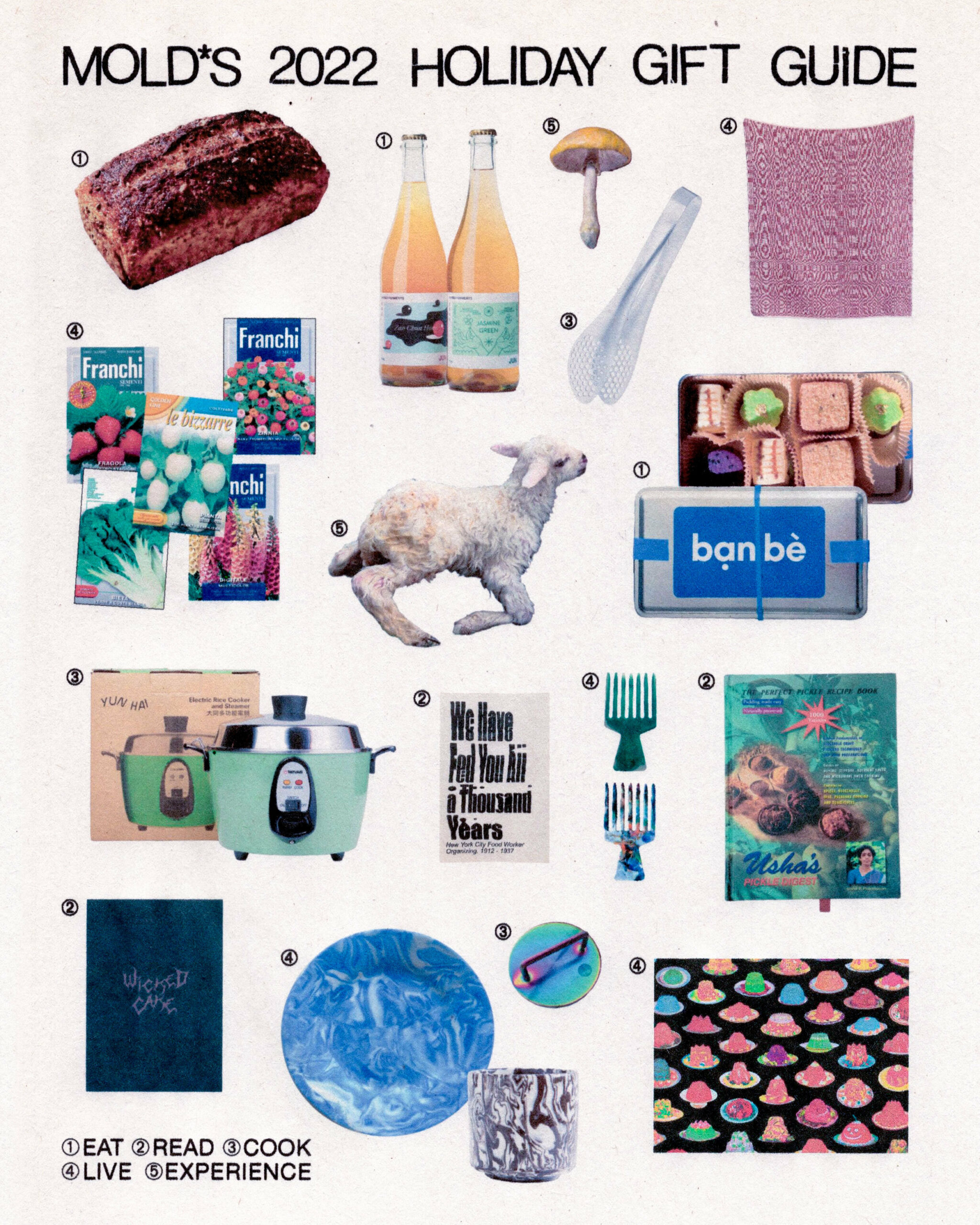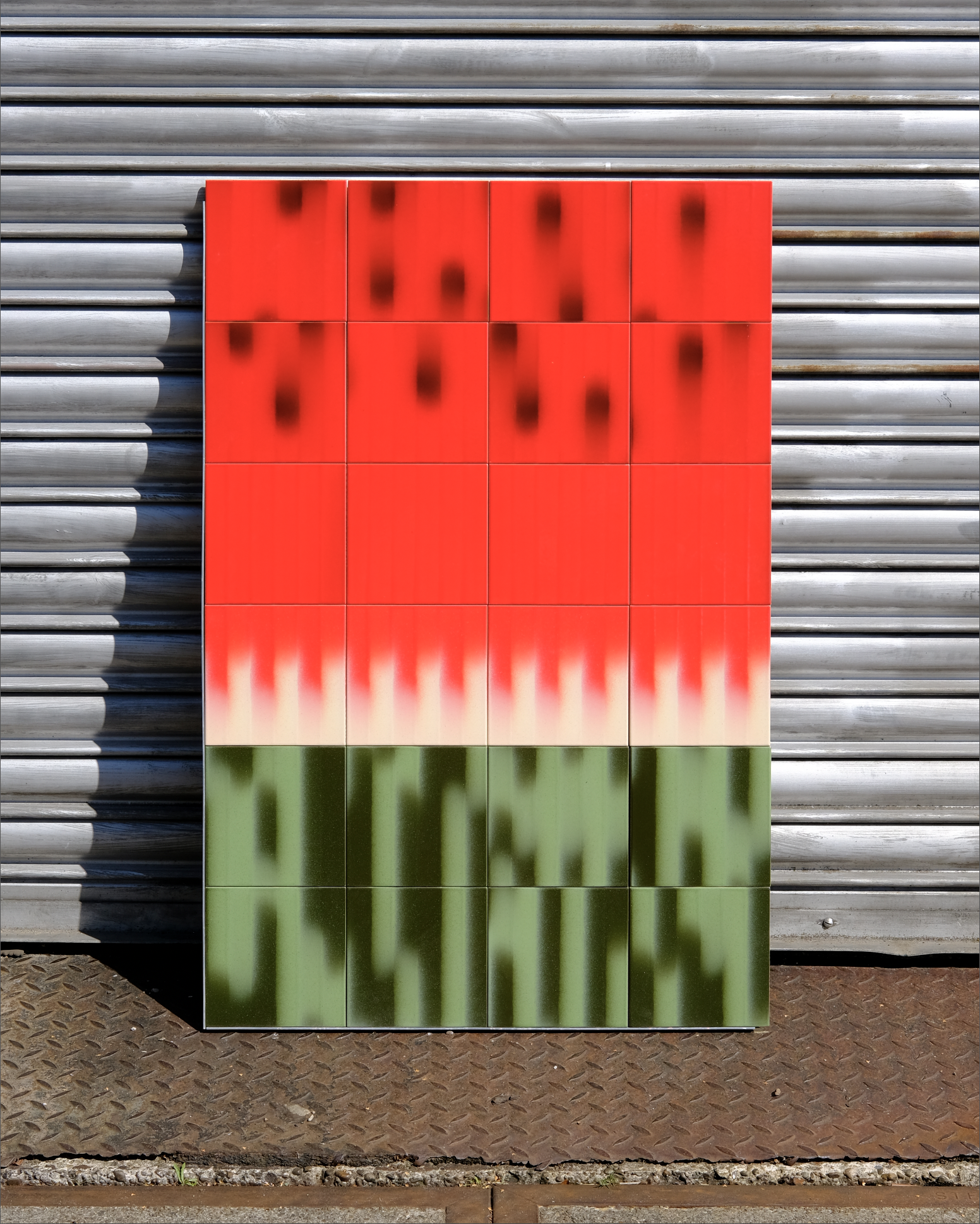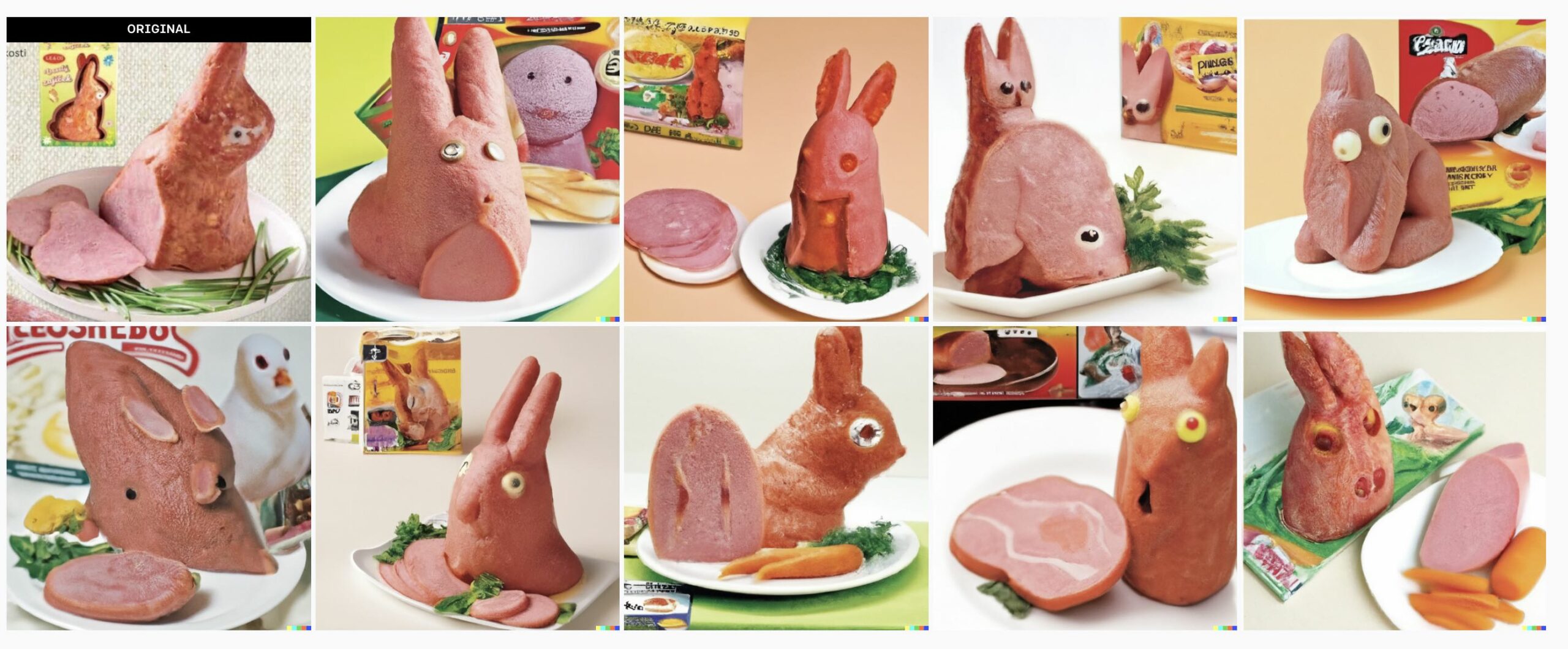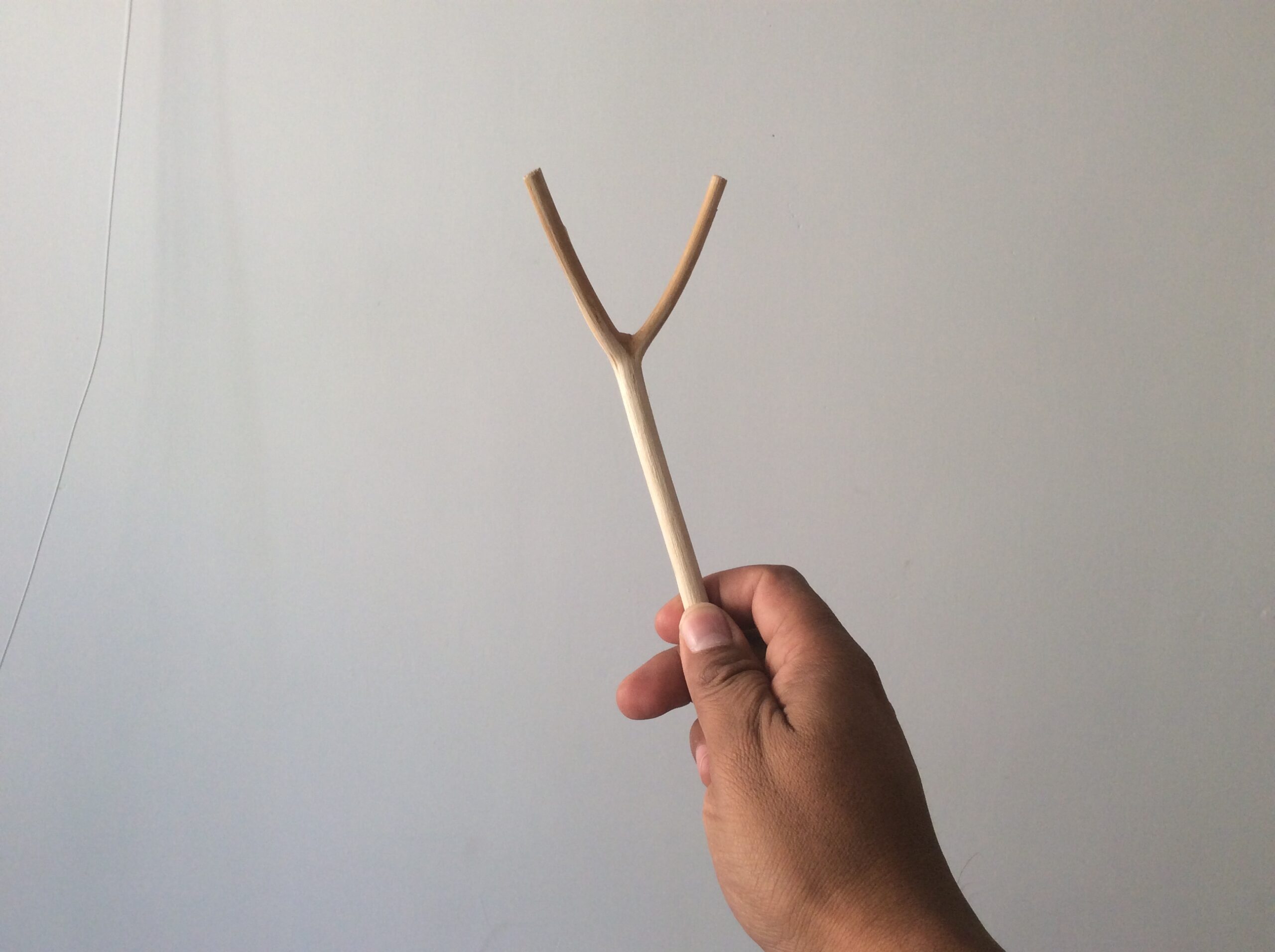From his studio in Montreal, Antoine Provencher makes striking, one-of-a-kind speakers. What sets his MYCOAUDIO speakers apart is the acoustic insulation. Typically constructed with a plastic foam like polyurethane, Provecher substitutes plastic out for mycelium, the root structure of mushrooms. This organic filling is complemented by a ceramic shell casing which is fired Raku-style, an ancestral Japanese technique that involves a sharp shock in temperature. The result is an inimitable, crackled glaze creating an ethereal effect on the surface.
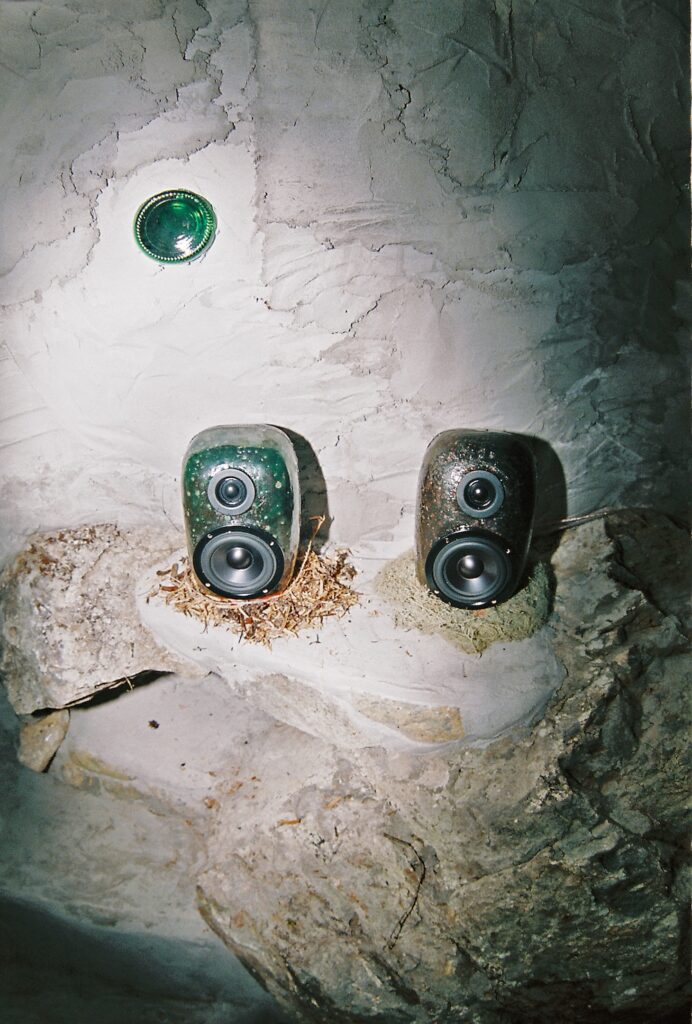
Some years back, Provencher saw Eric Klarenbeek’s Mycelium Chair, a 3D-printed shell with mycelium grown inside to create a solid but lightweight filling, making it sturdy, and practical. It blew his mind: “I instinctively dropped everything I was working on the side and thought – this is what I’m doing now.”
Although he was inspired by the mycelium’s material possibilities – sonic fidelity was always the goal. Having studied electroacoustics at university, Provencher’s background in music and composition served as a starting point for his design practice. As a result, his experience with the object world: molding, building, assembling, is in service to sound.
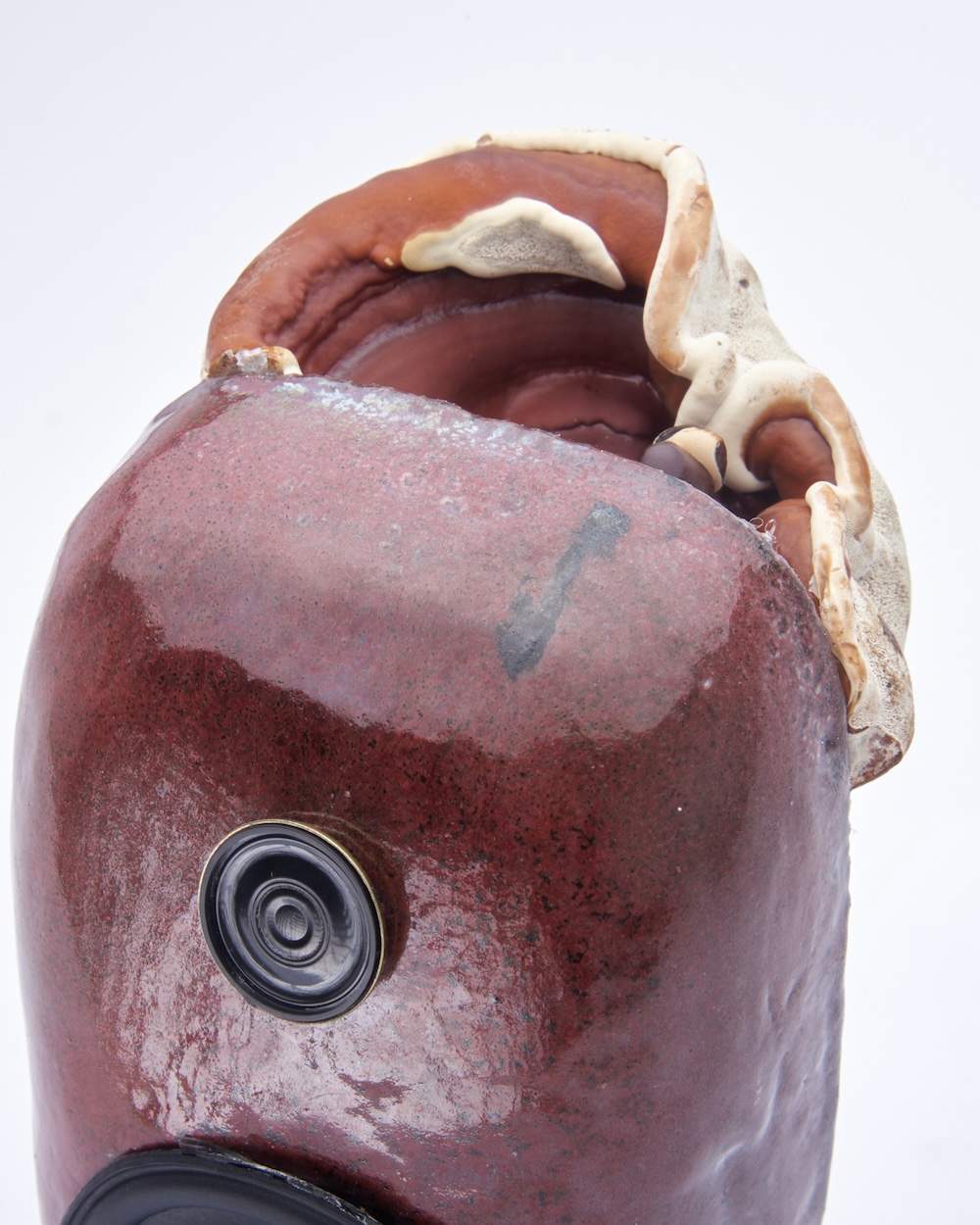
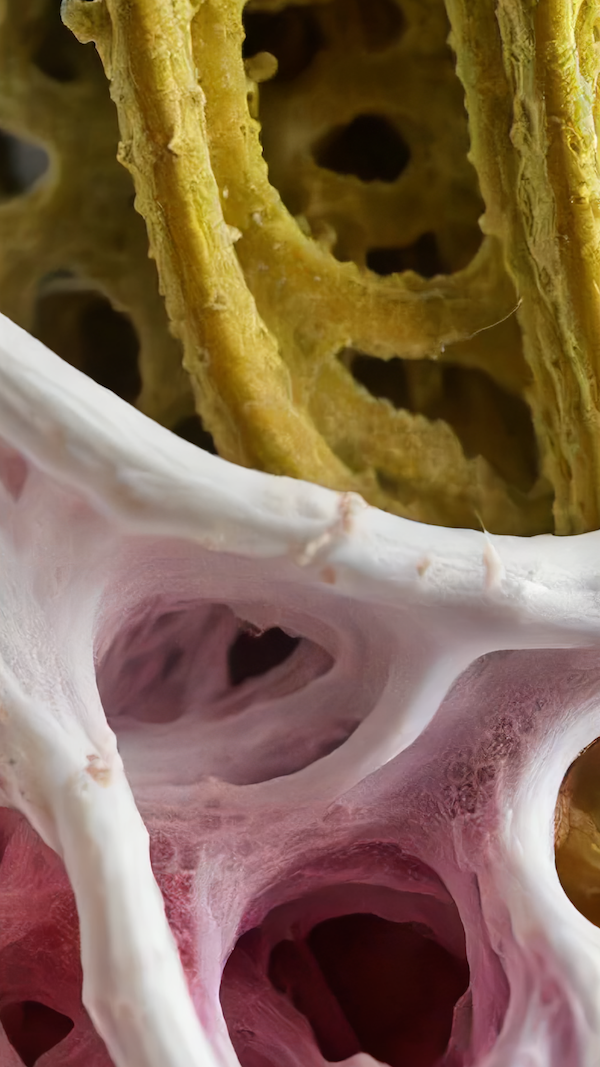
To deliver high quality audio products while using natural materials, Provencher set upon a protracted journey of research and development to find the perfect density and strength for the insulation. The first mycelium he grew was from oyster mushrooms. However, Provencher wanted to grow from a substrate, the biomaterial in which the mycelium grows, that could be locally sourced in Montreal – unlike the imported coco coir substrate required by oyster mushrooms.
By chance, the designer had access to a surplus of birch wood chips and sawdust from a neighboring studio, an ideal medium for growing reishi mushrooms fast. Unlike the oyster mushrooms, reishi, it turns out, also creates a more solid material, unaffected by aggressive sound pressure levels.
As the ceramic shell created a lot of resonance inside the speaker, Provencher needed the mycelium to be extremely dense. He recalls experimenting with different inoculation times, “The most magical part is to see the process, and to see them growing, it’s so amazing.”
Provencher describes this process with passion, “With reishi, when it dries, it becomes a brick with this really smooth texture, almost like cardboard, but way more beautiful, way more smooth. When you look closely you can see all the branches, all the little connections, really long ones that go from one side to the other…it’s very intricate work.”
It took Provecher two years before he had something he was happy with, a product that not only looked good but also sounded good.
For him, the goal was never to create a “mushroom sound”, but to create speakers where the audience wouldn’t be able to hear the difference between his and others on the market. Provencher wants to build credibility for mycelium, feeling that his work is part of a movement that shows that mushroom derived materials can be taken seriously, “These materials, they have innate properties, and we as humans underline them.”
Working with mycelium day in, day out, Provecher says that it has become like a new plastic for him, albeit a free and renewable version. However he adds that with MYCOAUDIO, the goal has never been to produce for mass consumption, “I don’t really see MYCOAUDIO being part of a retail environment…as an economic model it doesn’t really make sense – production is slow, everything is handmade, it’s a practice where really it works as a piece of art – everything is one piece at a time. It’s important for me to do everything by hand, and really pay attention to those micro details that are really making these unique, in my opinion.”
Beyond their sustainability, mushrooms have a long history of enhancing sensory experience – and Provencher’s practice brings together nature and technology as a transmitter of music. He describes this deep conceptual connection as “the cherry on the sundae”.
